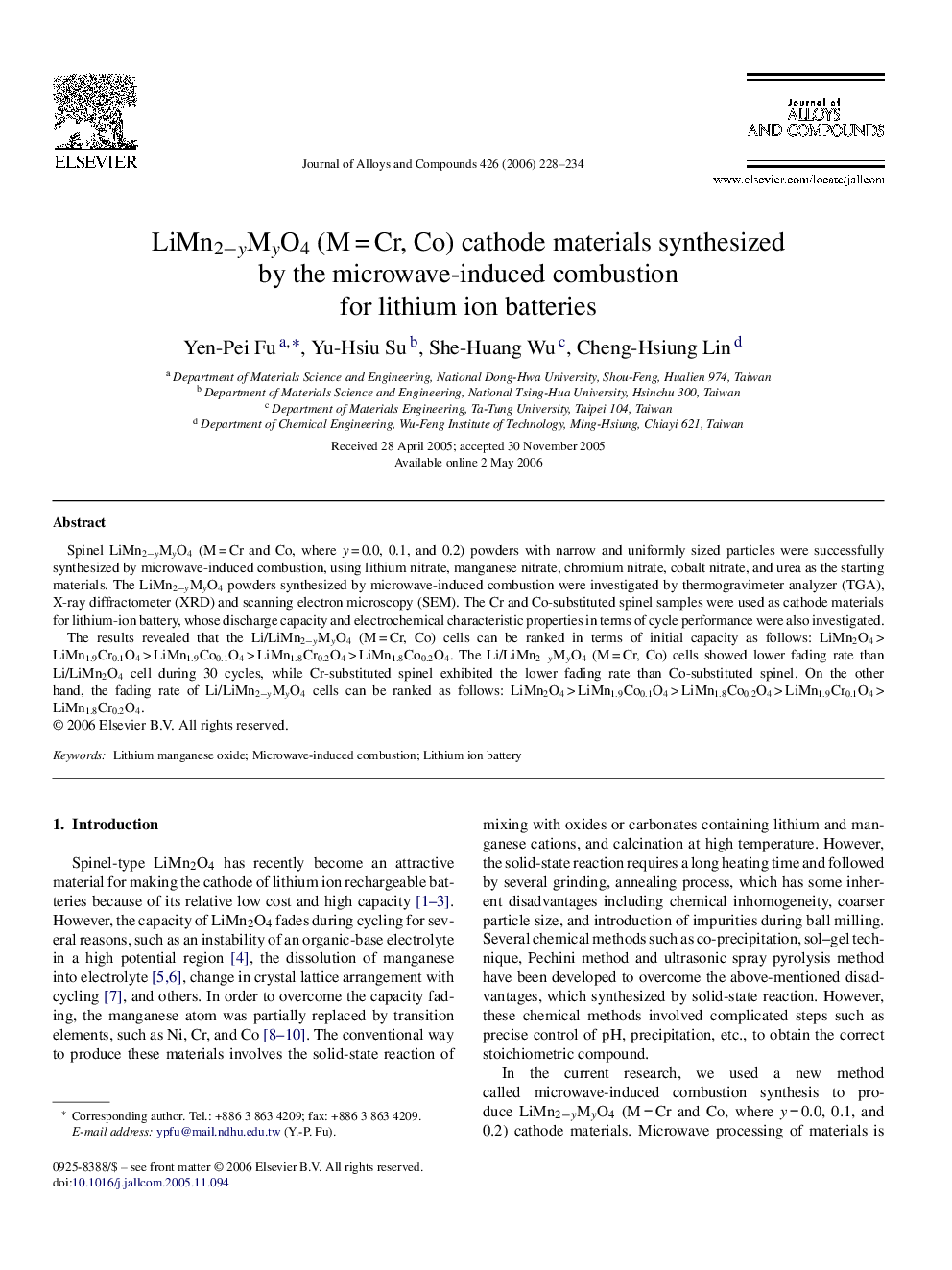| Article ID | Journal | Published Year | Pages | File Type |
|---|---|---|---|---|
| 1626804 | Journal of Alloys and Compounds | 2006 | 7 Pages |
Spinel LiMn2−yMyO4 (M = Cr and Co, where y = 0.0, 0.1, and 0.2) powders with narrow and uniformly sized particles were successfully synthesized by microwave-induced combustion, using lithium nitrate, manganese nitrate, chromium nitrate, cobalt nitrate, and urea as the starting materials. The LiMn2−yMyO4 powders synthesized by microwave-induced combustion were investigated by thermogravimeter analyzer (TGA), X-ray diffractometer (XRD) and scanning electron microscopy (SEM). The Cr and Co-substituted spinel samples were used as cathode materials for lithium-ion battery, whose discharge capacity and electrochemical characteristic properties in terms of cycle performance were also investigated.The results revealed that the Li/LiMn2−yMyO4 (M = Cr, Co) cells can be ranked in terms of initial capacity as follows: LiMn2O4 > LiMn1.9Cr0.1O4 > LiMn1.9Co0.1O4 > LiMn1.8Cr0.2O4 > LiMn1.8Co0.2O4. The Li/LiMn2−yMyO4 (M = Cr, Co) cells showed lower fading rate than Li/LiMn2O4 cell during 30 cycles, while Cr-substituted spinel exhibited the lower fading rate than Co-substituted spinel. On the other hand, the fading rate of Li/LiMn2−yMyO4 cells can be ranked as follows: LiMn2O4 > LiMn1.9Co0.1O4 > LiMn1.8Co0.2O4 > LiMn1.9Cr0.1O4 > LiMn1.8Cr0.2O4.
